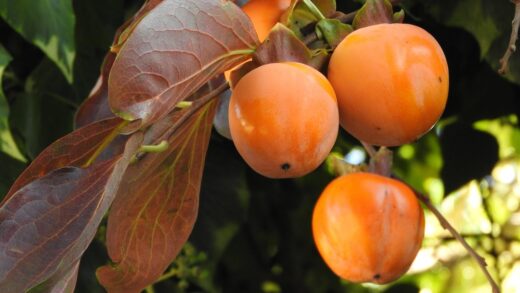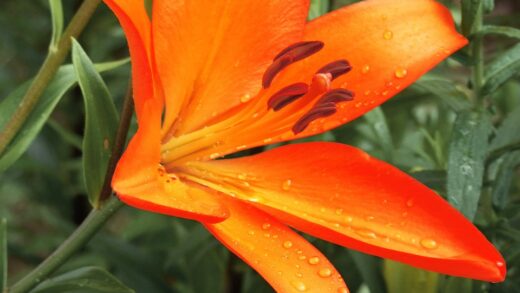The single most important environmental factor for the successful cultivation of cosmos is an abundance of direct sunlight. These plants are true sun-worshippers, a trait inherited from their origins in the open, sun-drenched fields and meadows of Mexico. To thrive, grow strong, and produce the profusion of flowers for which they are celebrated, cosmos require a location that receives at least six to eight hours of full, direct sunlight each day. This is a non-negotiable requirement, and a lack of sufficient light is the most common reason for disappointing results with these otherwise easy-to-grow annuals.
When cosmos are planted in a location with inadequate sunlight, the consequences are readily apparent. The plants will become “leggy,” a horticultural term describing the development of long, weak, and spindly stems with sparse foliage. This is a direct result of the plant’s desperate effort to stretch and reach for a light source. These elongated stems are often unable to support the weight of the leaves and any flowers that do manage to form, leading to plants that flop over and have a weak, untidy appearance.
Furthermore, insufficient light has a dramatic and negative impact on flower production. Photosynthesis is the process by which plants convert light energy into chemical energy, which fuels all of their growth, including the creation of blooms. When light is limited, the plant simply does not have enough energy to invest in flowering. A cosmos plant grown in a shady location may produce lush green foliage but will have very few, if any, flowers. The blooms that do appear may be smaller and less vibrant than those on plants grown in full sun.
Therefore, when selecting a site for planting cosmos, the primary consideration must be the amount of sunlight the area receives. Observe your garden throughout the day to identify the spots that are bathed in sun for the longest duration, avoiding areas that are shaded by trees, buildings, or other tall plants. Providing this fundamental requirement of full sun is the first and most critical step in ensuring your cosmos grow into healthy, sturdy, and floriferous specimens that will grace your garden with their beauty all season long.
The essential role of full sun
Full sun is the catalyst for all of the vital processes within a cosmos plant. The term “full sun” in horticulture is generally defined as an area that receives six or more hours of direct, unobstructed sunlight per day. For cosmos, meeting and even exceeding this minimum is ideal. The intense energy provided by direct sunlight powers the process of photosynthesis, where the plant uses chlorophyll in its leaves to convert carbon dioxide and water into glucose—the sugar that provides energy for growth, and oxygen. Without sufficient light, this energy production is severely hampered.
More articles on this topic
This energy is not just used for basic survival; it is directly linked to the plant’s structural integrity. In a full-sun environment, a cosmos plant can produce strong, sturdy stems capable of holding the feathery foliage and numerous flowers upright. The internodes—the spaces on the stem between the leaf sets—remain short and compact, resulting in a bushy, well-structured plant. This robust framework is essential for withstanding wind and rain and for presenting the flowers beautifully for pollinators and for the gardener’s enjoyment.
Sunlight also plays a crucial role in triggering the flowering mechanism of the plant. As a quantitative short-day plant (which will be discussed in more detail), the duration and intensity of light influence the hormonal signals that tell the plant when to switch from vegetative growth (producing leaves and stems) to reproductive growth (producing flowers). Abundant sunlight ensures that the plant has built up enough energy reserves to support a long and prolific blooming period. It is the fuel that powers the floral display.
Ultimately, planting cosmos in anything less than full sun is setting them up for failure. While they may survive in partial shade (four to six hours of sun), they will not thrive. They will be a pale imitation of their potential, with weak stems, sparse foliage, and disappointing flower production. To witness the true splendor of a cosmos planting—a vibrant, airy cloud of color that dances in the breeze—you must provide them with the sun-drenched conditions they crave.
The effects of insufficient light
When a cosmos plant is deprived of the light it needs, it exhibits a series of predictable and detrimental symptoms known collectively as etiolation. The most noticeable of these is the development of long, weak, and spindly stems. In its search for light, the plant will rapidly elongate its stems, creating large gaps between the leaf nodes. This results in a plant that is structurally unsound and prone to flopping over, especially after a rainfall or on a windy day. The foliage will also be sparse, lacking the full, feathery appearance of a healthy plant.
More articles on this topic
Another significant effect of insufficient light is a dramatic reduction in flowering. A plant in a shady location will prioritize its limited energy resources on survival and vegetative growth, primarily on stretching its stems towards a light source. It simply does not have the surplus energy required for the demanding process of producing flowers. Any flowers that do manage to form will likely be smaller, paler in color, and far fewer in number than on a plant grown in full sun. In very shady conditions, the plant may not flower at all.
Plants grown in low-light conditions are also more susceptible to diseases and pests. The weak, etiolated growth is more vulnerable to attack from insects like aphids. Furthermore, shady and damp conditions with poor air circulation are the perfect breeding ground for fungal diseases such as powdery mildew. A strong, healthy plant grown in full sun has a much more robust defense system and is growing in an environment that is less conducive to these problems. The sunlight itself acts as a natural sanitizer, helping to keep the foliage dry and suppress fungal spores.
It is important to note that the effects of insufficient light cannot be corrected with other inputs like fertilizer or extra water. In fact, adding fertilizer to a light-deprived cosmos plant will only worsen the problem, as the nitrogen will encourage even more weak, leafy growth at the expense of any potential flowers. The only remedy for a cosmos plant suffering from a lack of light is to move it to a sunnier location, although this is often not practical once the plant is established. The best solution is proper site selection from the very beginning.
Understanding photoperiodism in cosmos
Photoperiodism is the physiological reaction of organisms to the length of day or night. This phenomenon plays a significant role in determining when many plants will initiate flowering. Plants can be categorized as long-day plants (flowering when days are longer than a certain critical length), short-day plants (flowering when days are shorter), or day-neutral plants (flowering regardless of day length). Cosmos bipinnatus is technically classified as a quantitative short-day plant.
What this means is that while cosmos will flower under a range of day lengths, they are prompted to flower more quickly and profusely as the days begin to get shorter in late summer. This explains why you often see a particularly spectacular flush of blooms on cosmos plants in the late summer and early autumn. The shortening day length acts as an environmental cue, signaling to the plant that the end of the season is approaching and it needs to accelerate its reproductive efforts.
This photoperiodic response is why cosmos planted early in the spring will spend the first part of the season, during the long days of early and mid-summer, focusing primarily on vegetative growth. They build a strong framework of leaves and stems, accumulating the energy they will need for the main flowering event. Then, as the days begin to shorten after the summer solstice, the hormonal trigger for flowering is activated more strongly, leading to the peak blooming period.
While this is a fascinating botanical detail, it does not change the fundamental requirement for full sun. The plant still needs high light intensity during the day to power photosynthesis, regardless of the day’s length. The photoperiod is more about the timing of peak bloom, while the light intensity is about the overall health and ability of the plant to produce those blooms. A plant in the shade will not flower well, even when the day length is optimal, because it lacks the basic energy to do so.
Site selection and maximizing light exposure
The process of ensuring your cosmos receive adequate light begins with careful site selection. Before you plant, spend a day observing your garden to map out the sun’s path across it. Identify the areas that receive sun from mid-morning to late afternoon, as these are the prime locations. Be mindful of shadows cast by your house, garage, fences, and large trees or shrubs. Remember that the sun’s path changes with the seasons; an area that is sunny in June might be shadier in August as the sun’s angle gets lower.
When planning your garden beds, consider the mature height of all your plants. Position taller plants, such as sunflowers or hollyhocks, on the north side of the bed, so they do not cast a shadow on shorter plants like cosmos. Placing cosmos in the middle or front of a border, depending on the variety’s height, will ensure they are not overshadowed by their neighbors. This strategic placement is key to creating a successful and harmonious planting where all plants have access to the light they need.
If your garden has limited sunny spots, consider using containers. Planting cosmos in pots gives you the flexibility to move them around to follow the sun. You can place them on a sunny patio, deck, or balcony where they can soak up the rays all day. This is an excellent solution for gardeners with shady yards or for those who want to enjoy the beauty of cosmos in a small space. Just be sure to choose a dwarf or compact variety that is well-suited to container culture.
In situations where a sunny location is bordered by a wall or a fence, you can use the reflective properties of the structure to your advantage. A light-colored wall or fence can reflect sunlight and heat back onto the plants, effectively increasing the amount of light they receive. This can create a warmer microclimate that benefits sun-loving plants like cosmos. By thinking strategically about placement and the surrounding environment, you can maximize the light exposure for your plants and ensure a brilliant floral display.


















